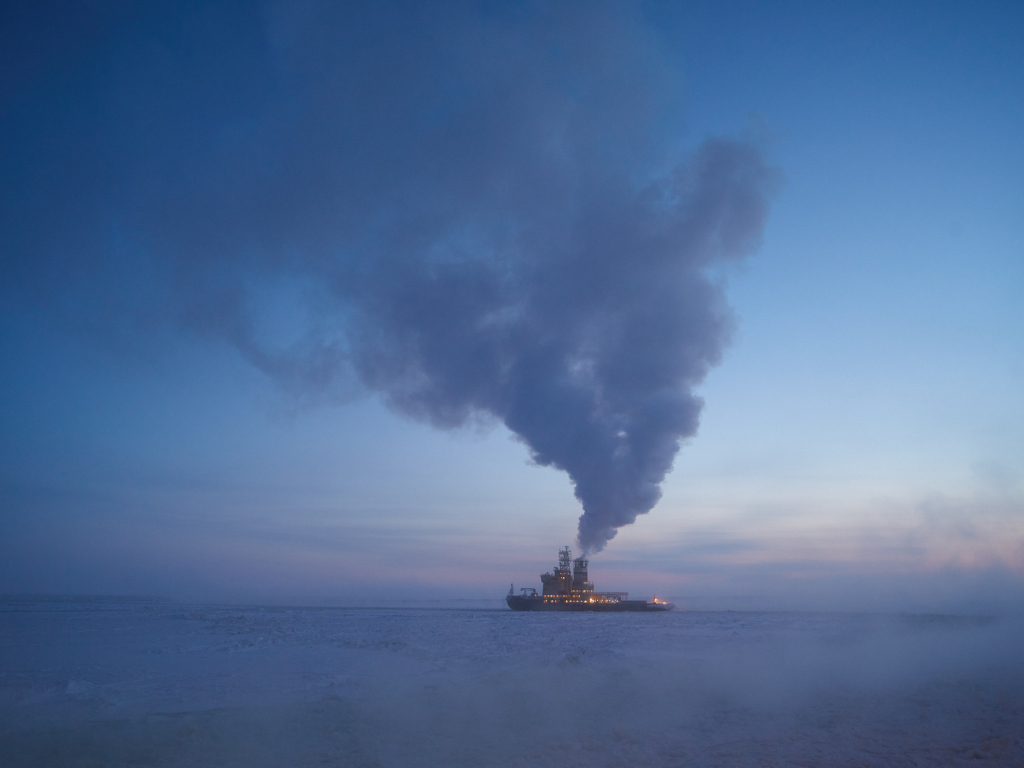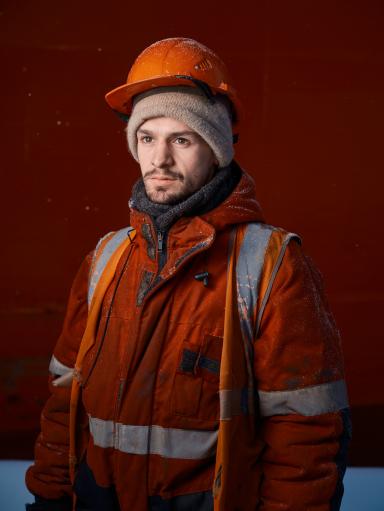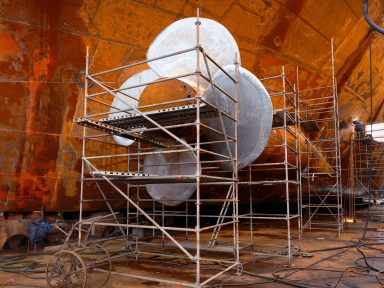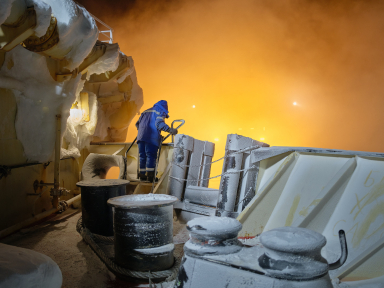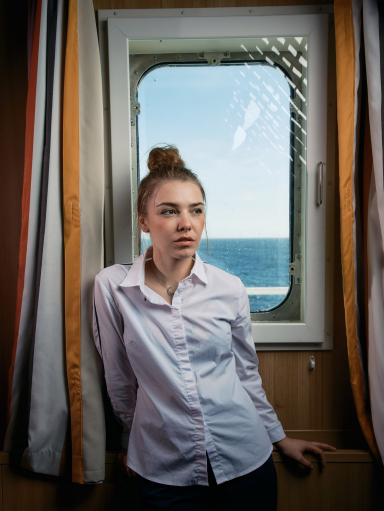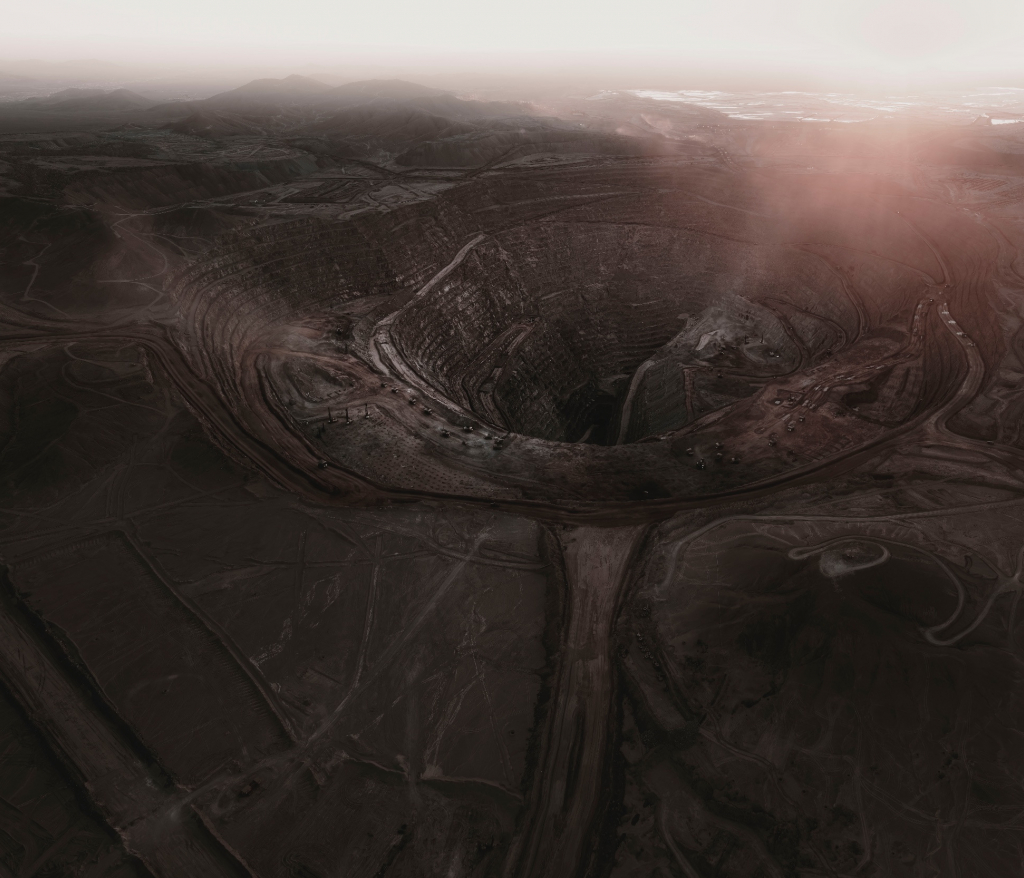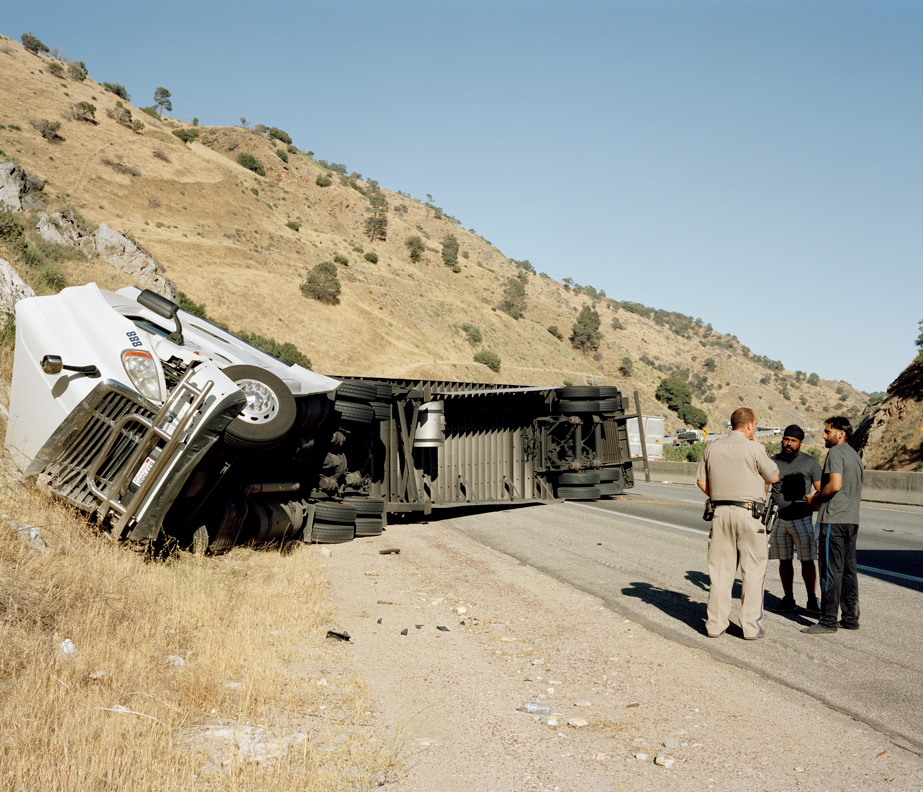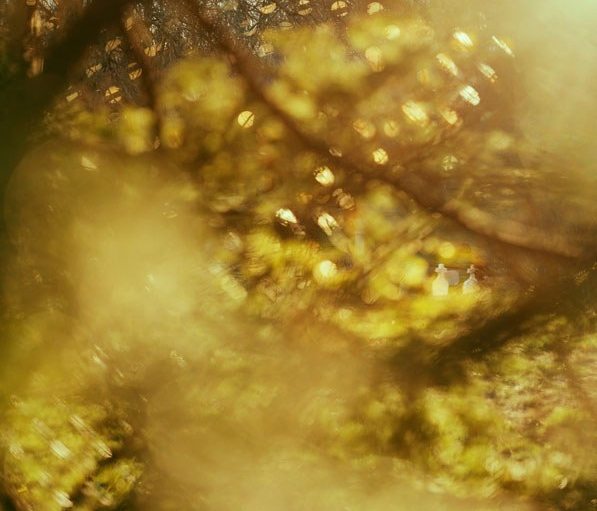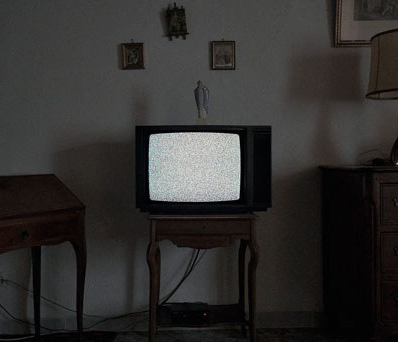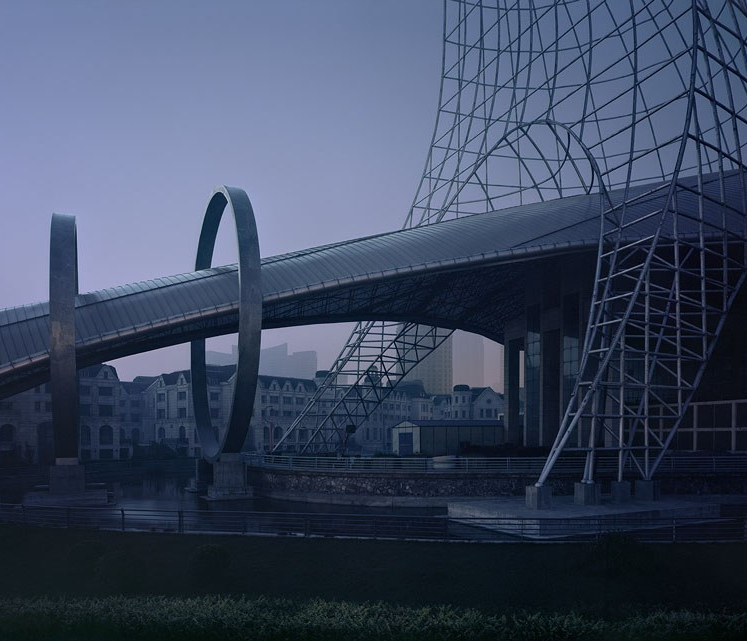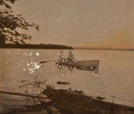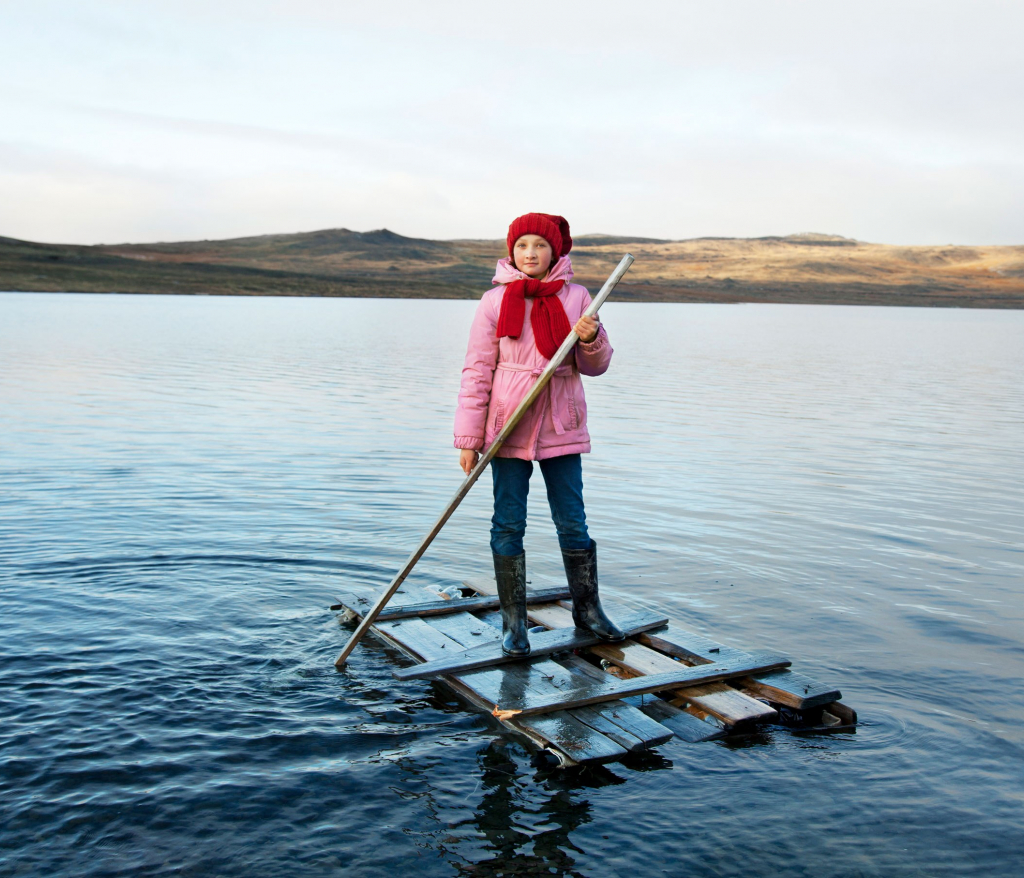Charles Xelot
White Water
Dates + Events
5th Annual Fourth and Rogers Block Party!
Friday, June 7 | 5:00pm - 9:00pm
Gallery Walk Opening Reception: Charles Xelot
Friday, June 7 | 5:00pm - 9:00pm
Charles Xelot
White Water
The Arctic has always been in the dreams and nightmares of explorers, artists, and poets. Charles Xelot photographs the huge ships that carry gas, oil and building materials across the treacherous ice. Xelot’s project, White Water, conveys the magnitude of the sea and her vessels, and the gravity of the risk involved in crossing it. The breadth of the project is both grand and intimate. Along with the ships, Xelot includes portraits that convey the emotional landscape of the sailors who live for months drifting through the ice.
Xelot was the winner of Life Framer Series Award 2024 and a corresponding solo exhibition at Pictura Gallery. The work was recently shortlisted for the Luma Rencontres Dummy Book Award. This summer, White Water was produced for projection on the big screen at the Les Rencontres de Arles’ Night of the Year :Charles Xelot | Les Rencontres de la Photographie Arles 'Night of the Year' Projection.
Charles Xelot’s images play out a drama, where the extraordinary natural light of the sky clashes with the high powered, man-made illumination from icebreakers and oil tankers. Inside the vessels, Xelot photographs with sensitivity to the inner lives of the sailors, scaling down his compositions to the tight living quarters of the crew. The close stillness of the portraits shows the emotional landscape of sailors who live for months drifting through the ice.
In this installation, portraits were kept small for a sense of scale, one where humans are vulnerable to the frozen ocean. They are dwarfed by the imposing machinery of the ships required to navigate it all.
Other elements of the exhibition are meant to echo time on the ice, and the vast and ever present sea. A single vantage from a ship is shown three times. The view becomes a window to the constant horizon, whose only change is marked by shifts in light. These prints were housed in diasec, a kind of acrylic sandwich, forming a glassy case like a thick slab of ice.
The breadth of White Water is both intimate and grand. Xelot renders subjects of massive scale, in a way that you really feel their size and weight. The project succeeds in conveying the magnitude of the arctic sea and her vessels, and the gravity of the risks involved in crossing the ice. In seeking to understand human and environmental concerns, White Water makes the physical difficulties of moving energy very real.
LIFE FRAMER
This exhibition was produced in conjunction with the Life Framer Organization. Xelot is the winner of the 2024 Life Framer Series Award, for which Pictura’s Co- Curators, Mia Dalglish and Lisa Woodward served as the competition jurors.
Life Framer has become a world-renowned platform for discovering
and celebrating contemporary photography from amateur, emerging and professional artists around the globe. It hosts an independent award, supported by a growing community of photographers, designed to champion creative culture on and offline.
Charles Xelot was born in France in 1985. He is represented by
the Sitdown Gallery in Paris and by the Gallery Dumas in Megeve.
For the last few years, Xelot has been exploring the limits of the
development of modern society. He is documenting the relationship
between man and his natural environment and focusing on the impact and consequences of the contemporary way of living.
Xelot started out with a scientific education and later discovered his
passion for photography. As a photographic assistant, he began to work with Ahmet Ertug, who initiated him in large format cameras, fine printing and inspired him to produce photo books. Over the years, Xelot has collaborated with several art foundations and corporations.
His work has been exhibited widely and published in the British Journal of Photography, Le Figaro magazine, Greenpeace and others.
His interest in social and environmental issues has led him to the
far corners of the world, while his work gradually evolved from
a documentary to a more contemporary style.
charlesxelot.com
White Water – The Frozen Dreams of Arctic Seafarers
The immaculate and deadly vastness of the Arctic has always attracted adventurous spirits, those who wanted to touch the edge of the world, test their own limits and find breathtaking inspiration. For this project, I traveled on and around the Russian Arctic Ocean. I got a shocking, if modest insight into the life of the sailors in the far north.
Commercial shipping needs certainty and results to justify its colossal investments. Failure is not an option. The huge ships that ply the Arctic Ocean carry gas, oil or building materials - the full power of human engineering is harnessed to cross the ice. The nations are in competition with each other; the objective is no longer glory and the conquest of territory as in the past, but market share and economic influence. Geography gave Russia a huge advantage, as it had the largest Arctic coastline and the only commercially exploitable sea route.Along the capes named by the explorers of the past, thousands of anonymous men sail. These ice seafarers travel through space in huge steel boats. The men survive protected by the shells of the ships, while outside the omnipresent white and the merciless cold stretch to infinity. The days are the same, with the same routine, the same colleagues, the same dangers. Only the landscape varies: the ocean comes in thousands of shades, from the darkest grey to the brightest white.
I'm both fascinated and terrified by the technical power being deployed to exploit the Arctic's resources. The new factories exporting liquefied gas, the gigantic tankers and nuclear icebreakers; all this technological debauchery at the service of our everyday comfort. Gas exported by sea is used to take showers, cook, and heat our homes. To maintain our comfort, we are already exploiting the ends of the earth. And then, where do we go after the ice? The Arctic is our planet's barometer, and the pack ice is melting while industrialization continues. But these considerations are far removed from those of the sailors, who must keep the ships moving. They are also caught up in the upheavals of history.
Some of the sailors I met became friends. I often think of them, of our conversations, their hopes, their doubts, and the great white we shared. This life in the Arctic seas is a life of contrasts, between the warmth of overheated cabins and the freezing cold outside, between the breathtaking beauty of the pristine Arctic landscapes and the terrifying power of the machines that traverse them.
Charles Xelot
White Water
The Arctic has always been in the dreams and nightmares of explorers, artists, and poets. Charles Xelot photographs the huge ships that carry gas, oil and building materials across the treacherous ice. Xelot’s project, White Water, conveys the magnitude of the sea and her vessels, and the gravity of the risk involved in crossing it. The breadth of the project is both grand and intimate. Along with the ships, Xelot includes portraits that convey the emotional landscape of the sailors who live for months drifting through the ice.
Xelot was the winner of Life Framer Series Award 2024 and a corresponding solo exhibition at Pictura Gallery. The work was recently shortlisted for the Luma Rencontres Dummy Book Award. This summer, White Water was produced for projection on the big screen at the Les Rencontres de Arles’ Night of the Year :Charles Xelot | Les Rencontres de la Photographie Arles 'Night of the Year' Projection.
Charles Xelot’s images play out a drama, where the extraordinary natural light of the sky clashes with the high powered, man-made illumination from icebreakers and oil tankers. Inside the vessels, Xelot photographs with sensitivity to the inner lives of the sailors, scaling down his compositions to the tight living quarters of the crew. The close stillness of the portraits shows the emotional landscape of sailors who live for months drifting through the ice.
In this installation, portraits were kept small for a sense of scale, one where humans are vulnerable to the frozen ocean. They are dwarfed by the imposing machinery of the ships required to navigate it all.
Other elements of the exhibition are meant to echo time on the ice, and the vast and ever present sea. A single vantage from a ship is shown three times. The view becomes a window to the constant horizon, whose only change is marked by shifts in light. These prints were housed in diasec, a kind of acrylic sandwich, forming a glassy case like a thick slab of ice.
The breadth of White Water is both intimate and grand. Xelot renders subjects of massive scale, in a way that you really feel their size and weight. The project succeeds in conveying the magnitude of the arctic sea and her vessels, and the gravity of the risks involved in crossing the ice. In seeking to understand human and environmental concerns, White Water makes the physical difficulties of moving energy very real.
LIFE FRAMER
This exhibition was produced in conjunction with the Life Framer Organization. Xelot is the winner of the 2024 Life Framer Series Award, for which Pictura’s Co- Curators, Mia Dalglish and Lisa Woodward served as the competition jurors.
Life Framer has become a world-renowned platform for discovering
and celebrating contemporary photography from amateur, emerging and professional artists around the globe. It hosts an independent award, supported by a growing community of photographers, designed to champion creative culture on and offline.
Charles Xelot was born in France in 1985. He is represented by
the Sitdown Gallery in Paris and by the Gallery Dumas in Megeve.
For the last few years, Xelot has been exploring the limits of the
development of modern society. He is documenting the relationship
between man and his natural environment and focusing on the impact and consequences of the contemporary way of living.
Xelot started out with a scientific education and later discovered his
passion for photography. As a photographic assistant, he began to work with Ahmet Ertug, who initiated him in large format cameras, fine printing and inspired him to produce photo books. Over the years, Xelot has collaborated with several art foundations and corporations.
His work has been exhibited widely and published in the British Journal of Photography, Le Figaro magazine, Greenpeace and others.
His interest in social and environmental issues has led him to the
far corners of the world, while his work gradually evolved from
a documentary to a more contemporary style.
charlesxelot.com
White Water – The Frozen Dreams of Arctic Seafarers
The immaculate and deadly vastness of the Arctic has always attracted adventurous spirits, those who wanted to touch the edge of the world, test their own limits and find breathtaking inspiration. For this project, I traveled on and around the Russian Arctic Ocean. I got a shocking, if modest insight into the life of the sailors in the far north.
Commercial shipping needs certainty and results to justify its colossal investments. Failure is not an option. The huge ships that ply the Arctic Ocean carry gas, oil or building materials - the full power of human engineering is harnessed to cross the ice. The nations are in competition with each other; the objective is no longer glory and the conquest of territory as in the past, but market share and economic influence. Geography gave Russia a huge advantage, as it had the largest Arctic coastline and the only commercially exploitable sea route.Along the capes named by the explorers of the past, thousands of anonymous men sail. These ice seafarers travel through space in huge steel boats. The men survive protected by the shells of the ships, while outside the omnipresent white and the merciless cold stretch to infinity. The days are the same, with the same routine, the same colleagues, the same dangers. Only the landscape varies: the ocean comes in thousands of shades, from the darkest grey to the brightest white.
I'm both fascinated and terrified by the technical power being deployed to exploit the Arctic's resources. The new factories exporting liquefied gas, the gigantic tankers and nuclear icebreakers; all this technological debauchery at the service of our everyday comfort. Gas exported by sea is used to take showers, cook, and heat our homes. To maintain our comfort, we are already exploiting the ends of the earth. And then, where do we go after the ice? The Arctic is our planet's barometer, and the pack ice is melting while industrialization continues. But these considerations are far removed from those of the sailors, who must keep the ships moving. They are also caught up in the upheavals of history.
Some of the sailors I met became friends. I often think of them, of our conversations, their hopes, their doubts, and the great white we shared. This life in the Arctic seas is a life of contrasts, between the warmth of overheated cabins and the freezing cold outside, between the breathtaking beauty of the pristine Arctic landscapes and the terrifying power of the machines that traverse them.
Dates + Events
5th Annual Fourth and Rogers Block Party!
Friday, June 7 | 5:00pm - 9:00pm
Gallery Walk Opening Reception: Charles Xelot
Friday, June 7 | 5:00pm - 9:00pm
